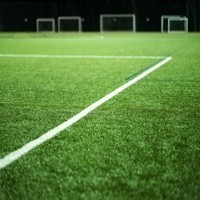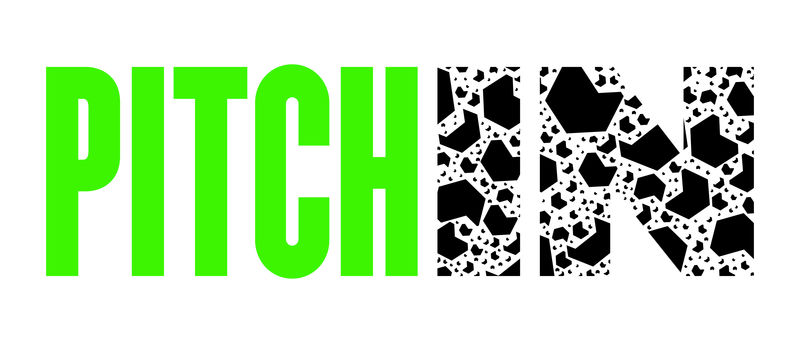3G Sports Pitches - So long to rubber crumb?
This blog post is from Dr Maddy Berg and Jasper Hamlet on Fidra's take on the proposal to restrict micro plastic infill from sports pitches.
For years, we have been adding microplastics to consumer products without being fully aware of the consequences to our environment. Now the European Chemicals Agency is on the cusp of agreeing a sweeping restriction, banning any “microplastics intentionally added to products”, and going some way to turning off the tap on microplastic pollution.
The scope of the proposed ban is vast; from agricultural seed coatings to microbeads, to ‘fragrance capsules’ in detergents, and potentially, microplastic infill used on third generation (3G) artificial turf. The latter is something that we at Fidra have been working on closely through our Pitch In project. With a final consultation on socio-economic impacts now open, we give our view on why we think a ban on infill is needed, and how we can ensure such a positive move for the environment won’t impact society’s fair access to sports pitches.
The undeniable problem of plastic pitches
3G technology introduced the use of small rubber granules as a performance infill. In almost all cases this infill is made of microplastic[1], most commonly a synthetic rubber known as SBR or ‘rubber crumb’ that is made by grinding up old, ‘end-of-life’, tyres. Spread loosely across the plastic ‘grass’ filaments, they help provide comfort and reduce injury. However, the application of this loose microplastic, often outside, clearly creates the risk of microplastic pollution to the environment.
This issue, however, has only recently been recognised, meaning that in most cases this infill has very few barriers to prevent it leaking from the pitch. Which it does. And there is sufficient evidence to suggest quantities of loss are significant[2],[3]; especially compared to other sources of microplastic pollution across the continent. Even more so when considering 3G turf’s increased popularity (nearly 100,000 pitches will have been installed across Europe by the end of 2020[4]).
Paths to pollution
Without barriers, infill can be lost from the edge of the pitch during play, use and maintenance, spilt during installation and removal, or washed down drains. Once in the environment this infill, like all microplastics, doesn’t go away and can cause harm in soil, freshwater and marine environments[5]. Once pitches reach the end of their lifespan, issues such as ‘dodgy’ recycling[6], aging material[7], and stockpiling of waste[8],[9], all compound the problem, providing further routes of loss and additional impacts to the environment.
There are solutions…
So, what can be done? From choosing the right type of pitch and designing it well, to managing the surface and playing on it responsibly, there are many ways to reduce microplastic pollution from pitches.
Au naturel
Ultimately, not using plastic at all is the most effective way to stop loss. Although opting for a natural pitch might seem like the obvious solution, we understand it’s not always a simple choice. Natural grass pitches can require more frequent maintenance, reduce available playing time, and often need pesticides, herbicides, and fertilizers to maintain the pitch quality. However, innovation and good practice mean that durability of grass pitches is improving and with tweaks to management, increased play can be achieved while also minimising environmental impact.
Suitable substitutes - swapping plastic for plant
Substituting infill material can also be a solution as performance infill doesn’t have to be microplastic. We are already seeing infill innovation, with companies utilising waste streams from food production or creating new materials that are fully biodegradable[10] to replace microplastic. Several companies have turned to the waste of the 75 billion coconut husks produced every year, 85% of which is currently burnt or landfilled[11], with olive pits, walnut shells, and wood also being used successfully. Moreover, cork infill has long been used as a suitable alternative, supporting a sustainable rural industry and biodiverse habitat.
So, the options are there, but with only 3% of FIFA certified pitches in 2017 using organic alternatives, it is clear more needs to be done to increase the uptake. Though all infills have their advantages and disadvantages, the continuous supply of cheap rubber granules to the market may have limited the move toward more environmentally friendly options. An imminent restriction might well be the incentive needed to push these alternatives into the mainstream.
Clever design to prevent loss
Where pitches still use microplastic as infill, there are ways to reduce the amount that escapes the pitch. Clever design can reduce the amount of infill needed and how much it moves around the pitch. Physical barriers like filters can stop microplastic leaks, while raising awareness with players could reduce the amount of microplastic getting into drains.
If properly implemented, these measures can go some way toward minimising pollution from pitches, but they can never be expected to be 100% effective. Analysis by ECHA suggests that measures like this could reduce losses from 16,000 tonnes per year, to 1600 tonnes per year across Europe. However, that’s still more pollution than emitted from microbeads in exfoliants and face cleansers; already banned in the UK[12] due to their environmental impact.
Changing times
When we started work on this issue, we explored the alternatives to microplastic infill, looked at natural grass turf, and spent time understanding the artificial turf industry. Promoting ‘niche’ alternative materials in the face of a much cheaper, commonly used and well tested SBR infill seemed an unachievable task. Our approach was to focus on the pragmatic solutions first: prevent loss through existing and available mitigation measures. Along with KIMO International, we produced guidelines that summarised all possible ways to reduce loss, from pitch choice to player behaviour[13].
Regardless of a potential ban, there is no getting round the fact that existing pitches will be using SBR rubber crumb for some time. So, a combination of all these options will be needed even if pitches switch to alternative materials.
So where do we stand?
However, as a society we are now moving away from the unnecessary use of plastic, and this should also apply to artificial turf. There needs to be commitment to systems or materials which are positive for the environment but do not impact access to playing fields.
Our work with the synthetic turf industry has shown it is fast-paced, future orientated and invests hugely in innovation to continually improve their products. However, until now, incentives have not been focused toward reducing environmental impact. We see this restriction changing that and believe this industry will adapt and thrive in the coming years. Therefore, we support the ECHA opinions that a future ban on microplastic infill is the most appropriate tool to reduce pollution, and that it is proportionate from a socio-economic perspective.
Find out more about how you can respond to the consultation here.
And for more on our work on 3G artificial turf visit www.team-pitch.in
Blog published August 2020.
References
[1] In 2017, only 3% of market share of FIFA certified 3G pitches used organic infill – the remaining 97% of infill would fall under the definition of a microplastic.
[2] Eunomia 2018 https://www.eunomia.co.uk/reports-tools/investigating-options-for-reducing-releases-in-the-aquatic-environment-of-microplastics-emitted-by-products/
[3] E.g. Lassen et al. (2015) Occurrence, effects and sources of microplastic releases to the environment in Denmark.
[4] ESTO Market Report (2020)
[5] Halle L. et al. (2020) Ecotoxicology of micronized tire rubber: Past, present and future. Science of the Total Environment
[6] E.g. loose ‘recycled rubber crumb’ offered as playground or animal substrate https://www.chapsmithservices.co.uk/synthetic-surfaces-astroturf-removal-and-disposal/
[7] Magnusson, Kerstin, Karin Eliasson, Anna Fråne, Kalle Haikonen, Johan Hultén, Mikael Olshammar, Johanna Stadmark, and Anais Voisin. “Swedish Sources and Pathways for Microplastics to the Marine Environment. A Review of Existing Data.” IVL Svenska Miljöinstitutet, no. C 183 (2016): 1–89.
[8] Zembla (2018) What happens to plastic and polluting artificial turf?
[9]See notes to specific fires in California & Washington in this US blog article.
[10] https://www.fidra.org.uk/artificial-pitches/plastic-pitches/solutions/#infills
[11] https://www.cocopallet.com/why
[12] https://www.gov.uk/government/news/world-leading-microbeads-ban-takes-effect
[13] https://www.fidra.org.uk/artificial-pitches/cleaner-pitch-guidelines/














